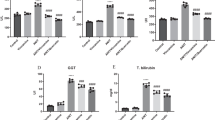Abstract
Cholesteryl ester transfer protein (CETP) is a plasma protein involved in the reverse cholesterol transport and expressed in several human tissues and cell lines. We studied CETP expression in Caco-2 cell line, a model of the human enterocyte epithelium. By reverse-transcriptase polymerase chain reaction, we could demonstrate that in basal condition Caco-2 cells have a low rate of expression of active CETP mRNA. Furthermore, we found that even in this cell line CETP mRNA alternative splicing occurs with deletion of exon 9 sequence. Densitometric analysis of the in vitro amplified fragments showed that under basal conditions about 60% of reverse transcribed CETP cDNA corresponds to exon 9-deleted transcripts. After challenge with 50 µM sodium oleate, there is a ∼2 fold increase in the transcription rate of the full-length CETP cDNA, as measured by competitive PCR, which is accompanied to an increased activity measured in the cell-conditioned medium. On the contrary, no significant change is seen in the amount of exon 9-deleted cDNA. Consequently, an inversion in the ratio of full-length and exon 9-deleted CETP cDNA is evident, suggesting that sodium oleate selectively enhances the expression of full-length CETP mRNA.
Similar content being viewed by others
References
Lagrost L: Regulation of cholesteryl ester transfer protein (CETP) activity: Review of in vitro and in vivo studies. Biochim Biophys Acta 1215: 209–236, 1994
Motti C, Bernardini S, Piemonte F, Federici G, Cortese C: The cholesteryl ester transfer protein process: An update. Nutr Metabol Cardiovasc Dis 5: 155–168, 1995
Drayna DT, Jarnagin AS, McLean J, Henzel W, Kohr W, Fielding C, Lawn R: Cloning and sequencing of human cholesteryl ester transfer protein. Nature 327: 632–634, 1987
Jiang XC, Moulin P, Quinet E: Mammalian adipose tissue and muscle are major sources of lipid transfer protein mRNA. J Biol Chem 266: 4631–4639, 1985
Inazu A, Quinet EM, Wang S, Brown MR, Stevenson S, Barr ML, Moulin P, Tall AR: Alternative splicing of the mRNA encoding the human cholesteryl ester transfer protein. Biochem 31: 2352–2358, 1992
Levy E, Meheran M, Seidman E: Caco-2 cells as a model for intestinal lipoprotein synthesis and secretion. FASEB J 9: 626–635,1995
Faust RA, Albers JJ: Regulated vectorial secretion of cholesteryl ester transfer protein (LTP-1) by Caco-2 model of human enterocyte epithelium. J Biol Chem 263: 8788–8789, 1988
Giovannini C, Maluri L, De Vincenzi M: Cytotoxic effect of prolamin-derived peptides on in vitro cultures of cell line Caco-2: implications for coeliac disease. Toxicol in vitro 9: 251–255, 1995
Bisgaier CL, Minton LL, Essemburg AD, White A, Homan R: Use of fluorescent cholesteryl ester microemulsions in cholesteryl ester transfer assay. J Lipid Res 34: 1625–1634, 1993
Chomczynski P, Sacchi N: Single-step method of RNA isolation by acid guanidinium thiocianate-phenol-chloroform extraction. Anal Biochem 162: 156–159, 1987
Gyllensten UB, Erlich HA: Generation of single-stranded DNA by the polymerase chain reaction and its application to direct sequencing of the HLA-DQA locus. Proc Natl Acad Sci USA 85: 7652–7656, 1988
Diviacco S, Norio P, Zentilin L, Menzo S, Clementi M, Biamonti G, Riva S, Falaschi A, Giacca M: A novel procedure for quantitative polymerase reaction by coamplification of competitive templates. Gene 122: 313–320, 1992
Yen FT, Deckelbaum RJ, Mann CJ, Marcel YL, Milne RW, Tall AR: Inhibition of cholesteryl ester transfer protein activity by monoclonal antibody. J Clin Invest 83: 2018–2024, 1989
Faust RA, Albers JJ: Synthesis and secretion of plasma cholesteryl ester transfer protein by human hepatocarcinoma cell line, HepG2. Arteriosclerosis 7: 267–275, 1987
Agellon LB, Zhang P, Jiang XC, Mendelsohn L, Tall AR: The CCAAT/ enhancer-binding protein bans activates the human cholesteryl ester transfer protein gene promoter. J Biol Chem 267: 22336–22339, 1992
Quinet E, Yang TP, Marinos C, Tall A: Inhibition of the cellular secretion of cholesteryl ester transfer protein by a variant protein formed by alternative splicing of mRNA. J Biol Chem 268: 16891–16894, 1993
Tall A: Plasma lipid transfer proteins. Annu Rev Biochem 64: 235–257, 1995
Sperker B, Mark M, Budzinski RM: The expression of human plasma cholesteryl ester transfer protein in HepG2 cells induced by sodium butyrate. Eur J Biochem 218: 945–950, 1993
Author information
Authors and Affiliations
Rights and permissions
About this article
Cite this article
Dessí, M., Motti, C., Cortese, C. et al. Alternative splicing of human plasma cholesteryl ester transfer protein mRNA in Caco-2 cells and its modulation by oleic acid. Mol Cell Biochem 177, 107–112 (1997). https://doi.org/10.1023/A:1006823601032
Issue Date:
DOI: https://doi.org/10.1023/A:1006823601032




